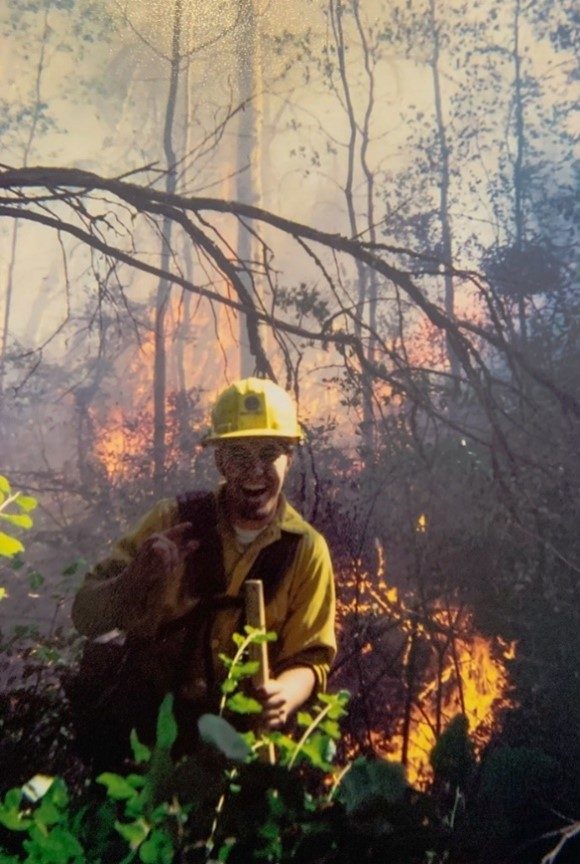Fighting Fire with Intelligence
Written by Benjamin Dinsmore
The sky glowed with an eerie orange hue as the sun's last rays of light struck thick smoke billowing into the sky. As a wildland firefighter with the Washington State Department of Natural Resources, I spent the day fighting a forest fire ripping through a canyon of thick vegetation. This fire was anything but typical; it had jumped our lines several times throughout the day, making the initial attack operations chaotic, unpredictable, and dangerous.
I turned on my headlamp and led a crew into the canyon to complete a handline. The fire was calm and moving slowly towards us, about 50 yards away, until I felt a dramatic shift in the wind and knew we were in trouble. Within moments, the fire raced toward us - a raging inferno 200 feet high. Embers and chunks of burning trees fell all around us. "We need to get to our safety zone!" someone yelled over the noise of the fire.
Dripping with sweat from the scorching heat beating down our backs, we sprinted down our escape route into the canyon. It was the first time I was truly terrified. Our only hope was to make it to our safety zone, so we made a run for it in the dark down a steep hill through thick vegetation.
Fast forward 20 years, and I find myself engaging in the world of firefighting in a new way. In my current role as a senior visual communicator for Lockheed Martin Space, it was by chance that I was assigned to the "Firefighting Intelligence" project – a serendipitous moment that allowed me to meld my professional work with my experience as a wildland firefighter. As I learned how Lockheed Martin is applying 21st Century Security® concepts and advanced technologies to help firefighters better predict, detect, and fight wildfires, it became more than just another program - it became personal.
I wanted to help beyond just bringing Firefighting Intelligence visually to life. At that moment, I knew it was my new civic duty to take on a stretch assignment as technical end-user advisor; to share my experience and knowledge, assisting the brightest minds in the business with bringing to life a technology that will have a tremendous impact on our environment and communities. I have friends who are still risking their lives daily as firefighters and first responders. They respond to incidents and fires that are chaotic, complex, and sometimes deadly. They go into harm's way to save lives and livelihoods.
What if they could predict and locate a fire hours before it even starts from a lightning strike?
What if they had the power of artificial intelligence analyzing fire behavior in near real-time, giving them fire growth predictions?
What would it look like if they had the ability to have persistent communications across multi-agency air and land suppression units, allowing them to potentially respond quicker to a large complex fire?
At Lockheed Martin, I’m empowered to help solve these questions, a new approach for me to continue combating wildfires.
Looking back on that surreal moment, watching the fire incinerate the area where we had just stood from the safety of the valley floor, I was lucky. My crew was lucky. We had made it out before the fire overran us. At that moment, I thought about how I had walked through the ashes where firefighters and civilians found themselves in similar situations and suffered grave ends. Although I loved fighting wildfires, including the “physically demanding” parts, it’s unpredictable – both on schedule and income. It's just one of the reasons I decided to hang up my gear. While I thought that meant I wouldn't be able to contribute to the wildfire fight, I'm grateful for the opportunity to be on the (digital) frontlines again and be a part of maturing a technology that may help bring my friends home to their families.





